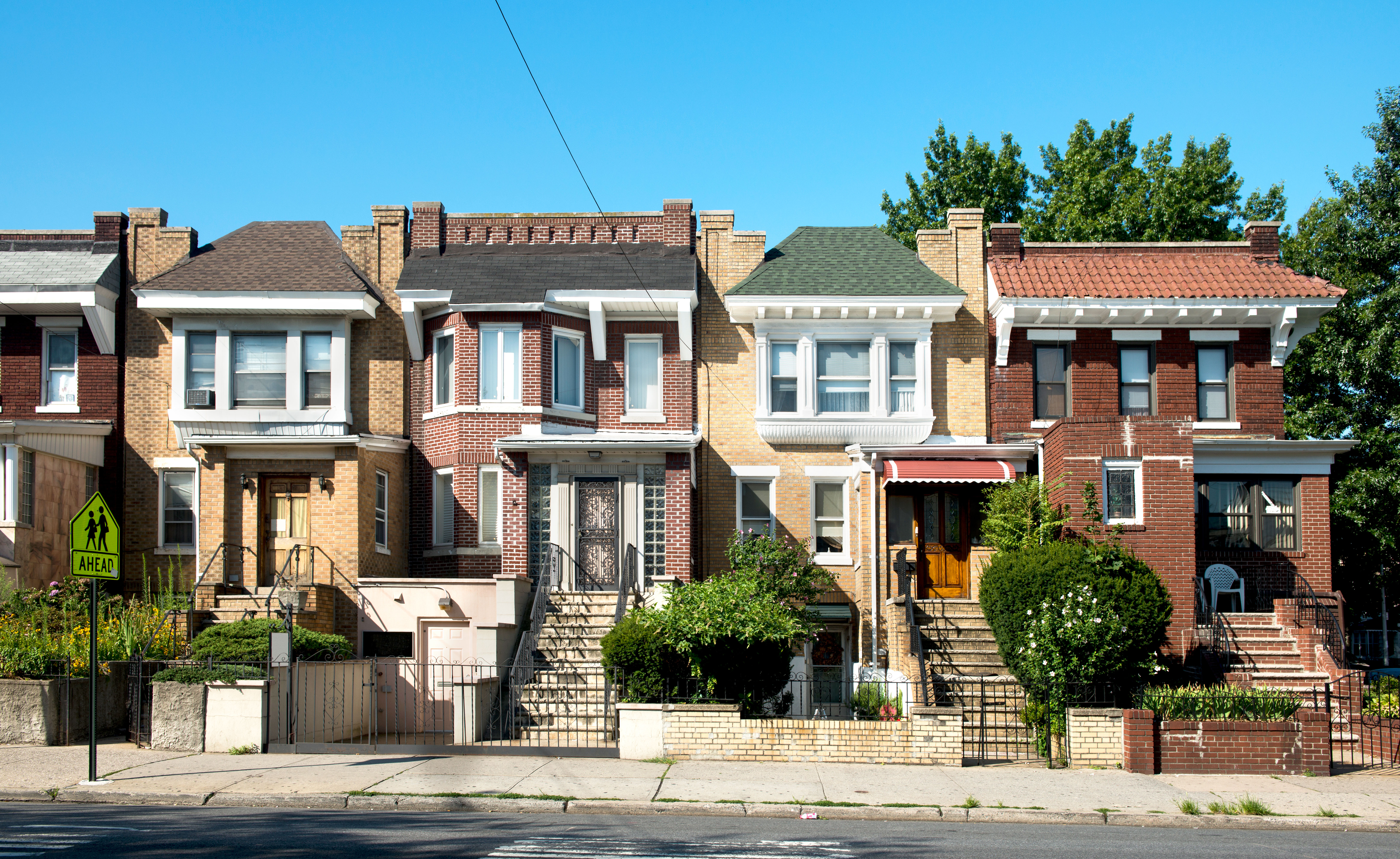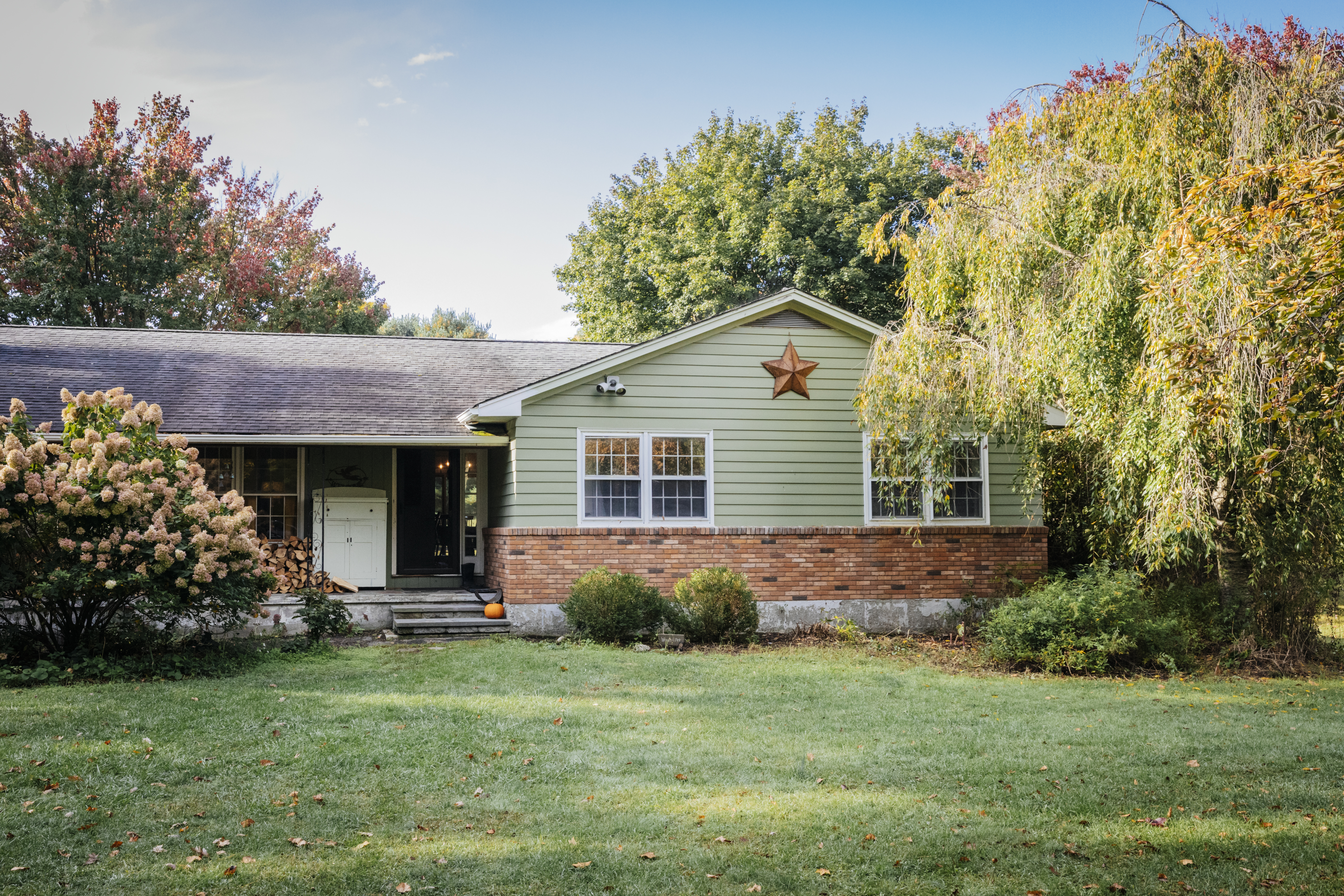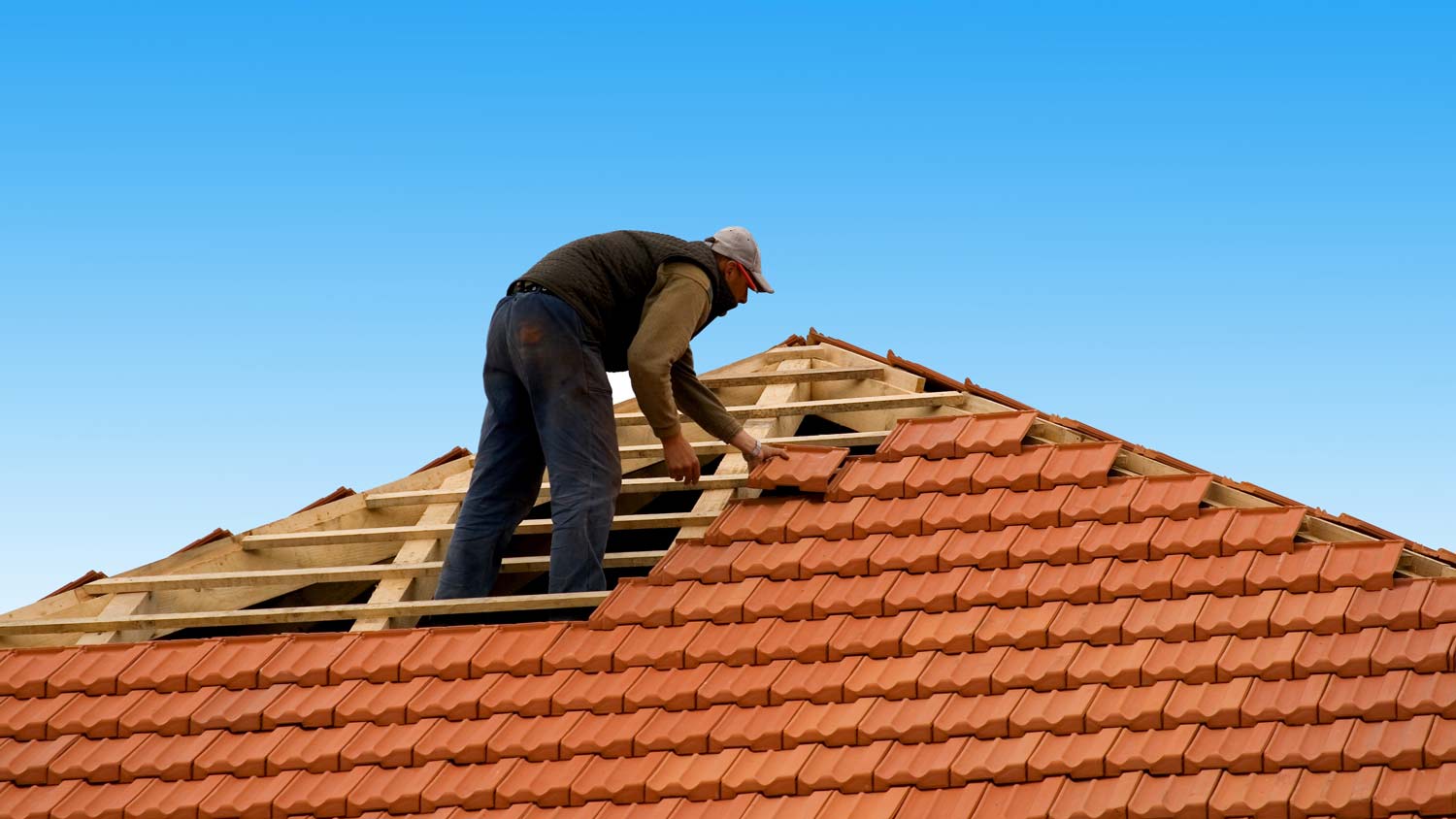
Learn about average roof repair costs in New York City and what factors can affect your total to set your budget appropriately.
A metal roof costs $11,737 on average, and prices typically range between $5,742 and $17,734 depending on the material, roof size, and more.


Metal roofs cost between $4 and $30 per square foot.
The type of metal can affect the price, ranging from $4 to $11 per square foot for aluminum roofs to $15 to $30 per square foot for copper roofs.
Other cost factors include the size and style of your roof, the type of fasteners used, the thickness of the metal, and more.
You’ll spend about 60% of the total roof cost on labor, which averages around $7,000.
A new metal roof costs an average of $11,737, with most homeowners spending between $5,742 and $17,734. Your total could be as low as $1,500 or as high as $34,900, depending on roof size, materials, and other factors.
To help homeowners with their next project, Angi provides readers with the most accurate cost data and upholds strict editorial standards. We’ve surveyed thousands of real Angi customers about their project costs to develop the pricing data you see, so you can make the best decisions for you and your home. We pair this data with research from reputable sources, including the U.S. Bureau of Labor Statistics, academic journals, market studies, and interviews with industry experts—all to ensure our prices reflect real-world projects.
Metal roofs cost between $4 and $30 per square foot, depending on the type of material used. This means the larger your roof area, the higher your price will be. Most pros charge by the roofing square, with each square covering 100 square feet.
Use the chart below to estimate your metal roof cost based on your home’s footprint, noting that prices assume a simple gable roof with a standard roof pitch:
| Home Square Footage | Average Metal Roof Cost Range |
|---|---|
| 1,000 | $6,000–$45,000 |
| 1,500 | $9,000–$67,500 |
| 2,000 | $12,000–$90,000 |
| 2,500 | $15,000–$112,500 |
| 3,000 | $18,000–$135,000 |
The cost of a metal roof varies by material, ranging from $4 to $11 per square foot for aluminum roofs to $15 to $30 per square foot for copper. Lead, rusted, steel, tin, and zinc roofs cost somewhere in between. Materials vary in terms of visual appeal, durability, and maintenance, so consult your roofing pro.
Here’s how metal type affects your cost, including materials, labor, and the proper fasteners and underlayment for your metal roof:
| Material | Average Cost Range (per Sq. Ft.) |
|---|---|
| Aluminum | $4–$11 |
| Copper | $15–$30 |
| Lead | $10–$15 |
| Rusted | $9–$15 |
| Steel | $6–$16 |
| Tin | $5–$12 |
| Zinc | $6–$12 |
In most cases, you’ll spend 60% of the total roof cost on labor—an average of around $7,000. Your labor costs depend on the roofer's experience, the demand in your area, and the warranty coverage offered by the company.
The average cost of metal roof replacement fluctuates by location, with steeper rates in areas with higher living costs, such as California ($16,800) and New York ($14,300). You’ll see lower prices in states like Georgia ($10,600) and Texas ($10,700). Prices will also be higher in major metropolitan areas.
Here’s what you might pay for a metal roof based on location:
California: $16,800
Florida: $12,000
Georgia: $10,600
Illinois: $10,800
Michigan: $10,600
New York: $14,300
North Carolina: $11,400
Ohio: $10,900
Pennsylvania: $11,100
Texas: $10,700
Additional factors can affect the cost of your metal roof, including the style, type of fasteners, metal gauge, roof pitch, and more.
Roof style: $3.50–$15 per square foot for corrugated metal, $7–$22 per square foot for metal shingles, $4–$6.50 per square foot for sheet metal, $7–$30 per square foot for standing seam roofs
Roof design: 15%–25% more expensive for complex designs, such as hip roofs or roofs with bump-outs and dormers, than for simple gable metal roofs
Type of fasteners: 30%–50% less for exposed fasteners than for hidden fasteners
Gauge of metal: $20–$30 per square foot for 22 gauge (the thickest option) to $4–$10 per square foot for 29 gauge (the thinnest option), with other gauges in between
Roof pitch: 15%–35% more expensive for steeper pitches
Snow guards or rails: $1,000–$4,000
Old roof removal: $1,000–$5,000
Roof decking repair: $2–$5 per square foot
Underlayment: $1 per square foot for felt paper, $1.30 per square foot for high-heat shield, $1.20 per square foot for synthetic (adhered), $1.15 per square foot for synthetic (nailed)
Permits: $250–$500
Warranties: $300–$500 more for a reliable roofing contractor who stands behind their work with a labor warranty and uses high-quality materials backed by a long manufacturer’s warranty
DIYing your metal roof installation could save you an average of around $7,000 on labor costs, or between $3,400 and $10,500 total. That said, while the potential cost savings might be tempting, we recommend leaving the work to a professional.
Here’s why it’s beneficial to hire a pro:
Metal roof installation is a complex process that requires specialized skills.
DIY installation could lead to expensive roof leaks, water damage, and other related problems that might cost thousands to repair.
Working on any roof is inherently dangerous, and the risk increases when installing slick metal roofing.
Most roofing manufacturers will void their warranty coverage if a licensed professional doesn’t complete the installation.
While it’s best to hire a pro, you might attempt DIY installation in the following scenarios:
You have construction or roofing experience.
The roof is small and simple (like a shed or barn).
You’re using a simple system, such as corrugated panels with exposed fasteners.
You have the proper safety gear, including harnesses and ladders.
You’re not concerned with voiding warranties.
Contact a metal roof installer near you for safe and reliable roof replacement, done right the first time.
The cost to install a metal roof will almost always be higher than the cost of a partial repair:
Metal roof replacement cost: $11,737
Average cost of metal roof repairs: $1,910
Here’s when you might replace your metal roof:
Widespread corrosion or rust
Recurring leaks in multiple areas
Structural issues
Nearing the end of lifespan
Improper installation or significant installation errors
Desire to upgrade energy efficiency, curb appeal, or resale value
Here’s when a metal roof repair might be better:
Isolated damage (a couple of panels, minor dents, sealant failures, etc.)
Limited leaks in small areas
Less than 25 to 30 years old
Superficial rust
Tight budget
Paying for a roof inspection might be a good idea to see if a repair is a feasible option; these cost $250 on average.
The cost of metal roof replacement can add up quickly, but several things can keep the costs down:
Considering more affordable options, such as aluminum, tin, or steel, over a luxurious copper roof could save you thousands. For example, aluminum costs $4 to $11 per square foot while copper costs $15 to $30 per square foot.
Consider the temperatures in your area and choose a more reflective metal or color to reduce cooling costs by 10% to 25%.
Adding insulation beneath your metal roof can reduce heating costs by approximately 10% to 40%, depending on your climate, the quality and thickness of the insulation, and your home’s overall energy efficiency.
If only a portion of your existing metal roof is damaged, consider a roofing repair, which might cost $1 to $5 per square foot.
You can expect an ROI of around 60% for metal roof replacement, or an average return of $7,000. Replacing an old metal roof will increase a home's value. Not only does it improve curb appeal, but buyers often pay more for the peace of mind that a new roof and lengthy warranties provide.
DIY metal roof installation could save between $3,400 and $10,500 on labor costs, but it’s not recommended for most homeowners.
Pros have the proper skills and safety equipment for the job, and incorrect installation often leads to costly repairs.
Pros normally charge a flat rate that includes permit costs, removing the old roof, and installing the new one.
Consider repairs instead for minor issues on a newer roof.
From average costs to expert advice, get all the answers you need to get your job done.

Learn about average roof repair costs in New York City and what factors can affect your total to set your budget appropriately.

A new roof boosts curb appeal and home value and keeps your property protected. Learn about roof replacement costs in New York City to budget accurately.

The cost to install vinyl soffit on your home depends on several factors, including the soffit length, condition, and the working height.

Roof sheathing is another name for the strong layer of wood boards that are attached to your roof’s framing. Learn how much roof sheathing costs in this guide.

Find out the average tile roof repair cost, key price factors, and ways to save. Get expert tips to plan your tile roof repair project with confidence.

You may wonder what fascia is on a house. Our guide explains what you need to know about this important part of your roof and what purpose it serves.